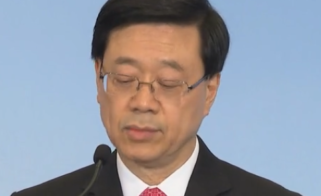Since the launch of the MPF ten years ago, fund managers of the constituent funds have had the opportunity to develop a number of different strategies to enable them to get better returns for investors. Unlike the traditional funds on which MPF funds were based, the MPFA places additional restrictions on types of assets that can be selected in approved constituent funds.
Following the initial launch of MPF products in 2000, there has been no great stimulus to enable there to be significant flows of assets out from one manager or fund into another. As a result, this has led to many MPF funds being what could best be described as “undersized”. In other words, they are too small to enable full investment diversification, but at the same time they are too big to be allowed to be closed.
As at mid-2010, more than 50% of all MPF constituent funds were below the US$50 million size that many would regard as being the threshold of economically viable. Of these, more than 150 funds were below US$25 million in size. At this level it can become quite difficult to achieve sufficient investment diversification of say a global or regional investment to ensure best returns and match or beat the benchmark index.
This has therefore caused a number of fund managers to carefully evaluate how they can better maximise returns for their funds without incurring significant additional costs, and ensuring they can achieve proper investment diversification.
To the rescue, like the proverbial white knight, came exchange traded funds (ETFs).
ETFs have been widely used for investment purposes in the retirement markets of the US and Europe. They are also beginning to be used by MPF fund managers. Why? Quite simply because ETFs have given fund managers, whether of retirement assets or of other funds, many benefits that otherwise they could not achieve. These include:
- Asset allocation – an ability to “buy the market” or sell it, instantly. This could also allow an opportunity to go short if required.
- Risk management – where the fund might seek to downsize its exposure to selected stocks while retaining a market weighting. This can be extended to allow such management of regional markets to enhance both the risk and the return characteristics of a portfolio.
- Core/Satellite – where the ETF might be used to achieve passive management of the core of a portfolio, and selected individual stocks used for active returns as the satellite. The reverse also works, where an ETF might provide instant market access to achieve excess returns.
- Tactical rotation – where the ETF enables very active allocation changes from one market to another.
In Hong Kong the MPFA has now authorised 97 ETFs for use by MPF funds. This compares to the SFC list of 67 ETFs that have been authorised for public distribution. Since the Tracker Fund was first launched, it has led a procession of funds across the line, thus giving the MPF access to all markets around the world through the ETF market.
Typically, there are three main strategy types used by ETFs. These are:
- Full replication – where the stocks that comprise the benchmark index are replicated in full by the ETF.
- Representative sampling – where a limited number of securities are held, that are designed to track the benchmark index closely.
- Synthetic replication – where the ETF uses swaps and other derivative instruments to more accurately and efficiently replicate the benchmark index.
Each of these has advantages and benefits (see table below). While the SFC has been prepared to authorise various types of ETF strategies, to date the MPFA has been far more restrictive – not allowing any synthetic-based ETFs to be used in MPF funds.
The synthetic replication model has become more prevalent in the European market, whereas physical replication is generally popular in the US. This is possibly due to the greater range and availability of derivatives in the European market, and the regulatory and market developments that have impacted the supply and demand for derivatives in different markets.
What is also clear is that synthetic replication is cheaper than full or partial replication, thus leading to lower fees and charges, and more accuracy, resulting in lower tracking error than either of the other two replication types. For this reason, synthetic replication has proven very popular with European retirement funds and their managers, whose tolerance to tracking risk is perceived to be lower.
A point of serious concern to MPF investors is that a number of the ETFs that have been used to date and are on the approved list are in fact US-listed products, rather than those (sometimes from the same provider) listed on an exchange closer to the Hong Kong market. The consequence of this is that the investor in such a US-listed ETF will incur US withholding taxes on the dividends at a rate of 30% (withholding tax), thus reducing the returns available to the investor by as much as 1% per annum. As these ETFs are also traded on the US stock exchanges, time of dealing will be outside Asian trading hours, if the ETF is invested in Asian markets.
In summary, the ETF vehicle provides a very neat solution to most fund managers as a quick, easy and cheap way in which to participate in almost all stock markets. Having a full choice of the products available would likely both improve performance and lower the costs of managing assets, both of which are clear to the benefit of the MPF investor

